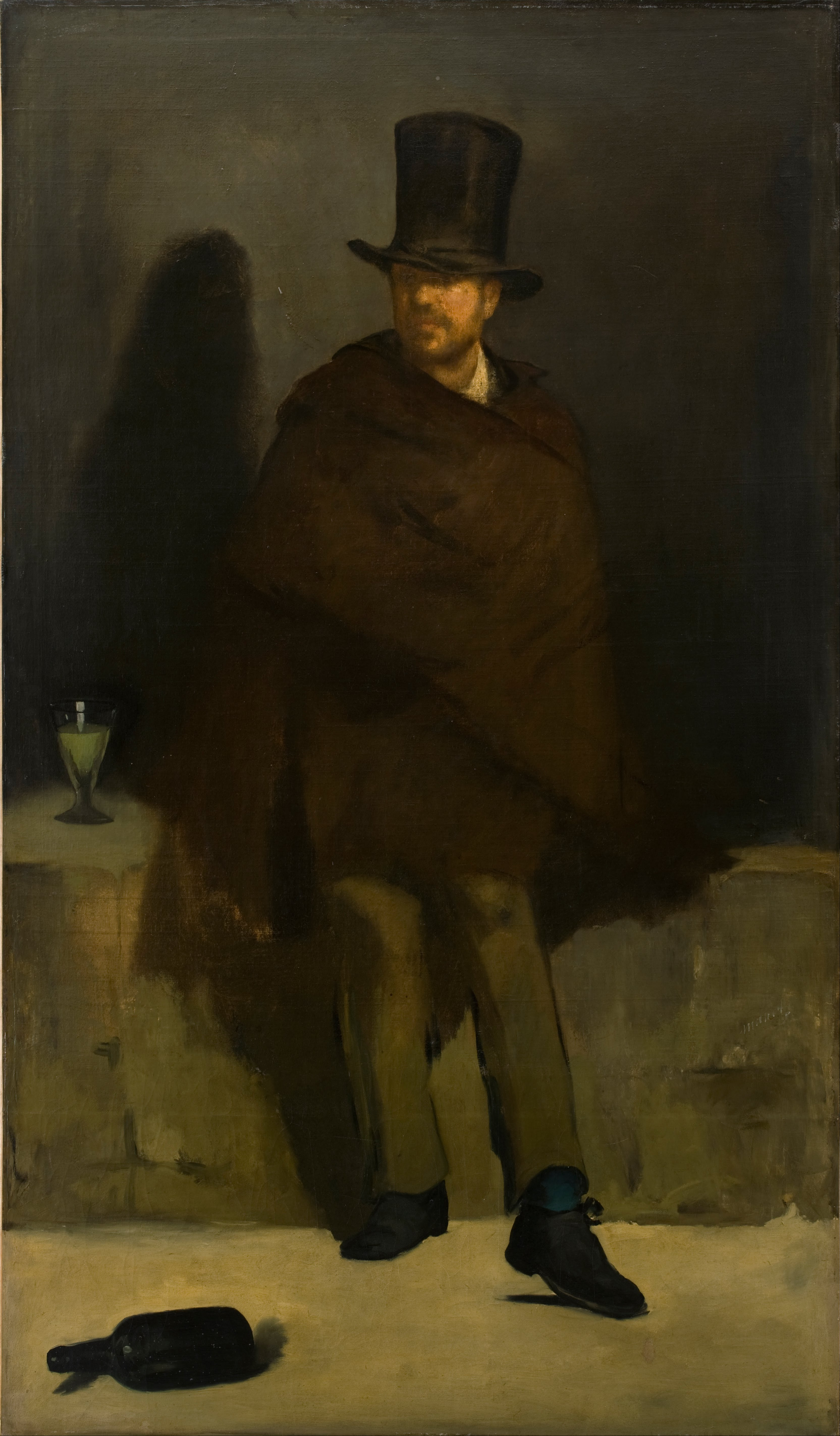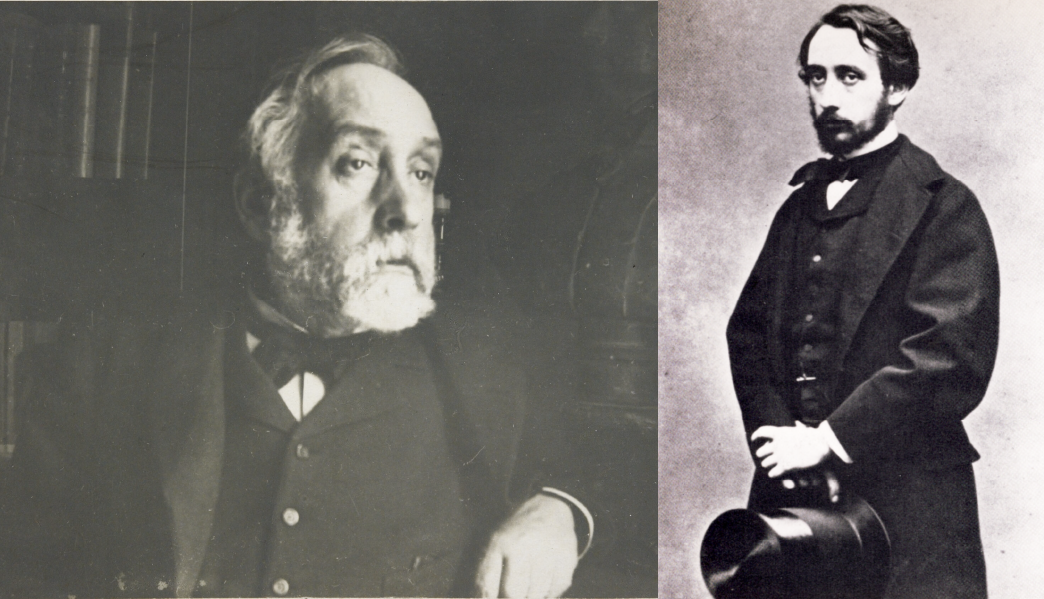Absinthe Minded
Barnaby Conrad III at the New Criterion

douard Manet and Edgar Degas met for the first time circa 1861–62, fittingly in the Louvre, while they were both copying Velázquez’s Portrait of the Infanta Margarita Theresa (1659) on etching plates. They became friends for life. While Degas drew and painted several portraits of the slightly older artist, Manet never reciprocated; yet for his entire life he kept a photograph of Degas in a personal album among images of his own family. After Manet’s death, Degas bought up a great number of his late friend’s works and eventually shepherded them into museums. Among many commonalities, they both painted notorious pictures of absinthe drinkers.
The Manet–Degas show currently at the Metropolitan Museum features Degas’ well-known masterpiece In a Café (The Absinthe Drinker) (1875–76), on loan from the Musée d’Orsay in Paris. (A full review of the exhibition by James Panero can be found in the November 2023 issue of The New Criterion.) But missing from the Met’s exhibition is Édouard Manet’s famous picture The Absinthe Drinker (1859), which remains in the Glyptotek, Copenhagen. Painted when Manet was just twenty-six, this life-size picture depicts a top-hatted bum with a Baudelairean flair. Instead of delivering a classical Bacchus hoisting a golden goblet, Manet portrayed a shabby rag-picker named Collardet, who begged daily in front of the Louvre. Beside him sits a gleaming glass of absinthe, while a discarded bottle lies at his feet. There is a smug, high-as-a-kite expression on this clochard’s face. You gotta problem with that, monsieur? Ta gueule! Whether or not he intended The Absinthe Drinker as a calculated affront, Manet felt strongly that an artist should paint real people, not just models in classical robes.
A few days before submitting the picture to the Salon of 1859, Manet invited his former teacher, the great classicist Thomas Couture, to visit his studio. As the older artist stared at the picture, his face reddened. “An absinthe drinker!” he snorted. “And they paint abominations like that! My poor friend, you are the absinthe drinker! It is you who have lost your moral faculty.” When Couture left the studio with barely a goodbye, both knew their already strained relationship was over.

The controversy grew. Manet’s picture shocked the selection committee of the Paris Salon in 1859, and they rejected it. Couture, naturally, had voted against it, but Manet was heartened to learn that Eugène Delacroix had cast a vote in his favor. The rejection had not surprised Manet, but it angered him. It was the first of many rebukes his art received from the powers that be and the public.
Although the poet and art critic Charles Baudelaire knew the younger Manet well enough to borrow money from him, he was surprisingly lukewarm about Manet’s art, considering the work crude and inelegant. He once wrote to Manet, calling him “the leading painter of the decrepitude.” Yet after the Salon scandal, Baudelaire comforted him by saying, “La conclusion, c’est qu’il faut être soi-même.” (The conclusion is that you must be yourself.)

As early as 1843, Baudelaire had urged young painters to paint the urban life around them, not just classical nudes in the Academy style:
The painter, the true painter, will be he who can extract from present-day life its epic quality, and make us see and understand, through color and line, how great and poetic we are in our cravats and patent leather boots.
In setting the tone for what we might call Paris’s “absinthe era,” Baudelaire was both a prophet and victim. As Christopher Isherwood later wrote, “Paris taught him his vices, absinthe and opium, and the extravagant dandyism of his early manhood which involved him in debt for the rest of his life.” Baudelaire was the first of the nineteenth-century poets to create art from the disorder of modern life. “You gave me mud and I gave you gold,” he once wrote of Paris. His collection of poems Les Fleurs du mal was the personal study of evil and addiction by a man who understood the world’s craving for sensation—at the expense of spirituality—as the supreme characteristic of his time. When the book appeared in 1857, he was fined for obscenity by the same court that had condemned Flaubert’s scandalous masterpiece Madame Bovary (1856).
Read the rest





